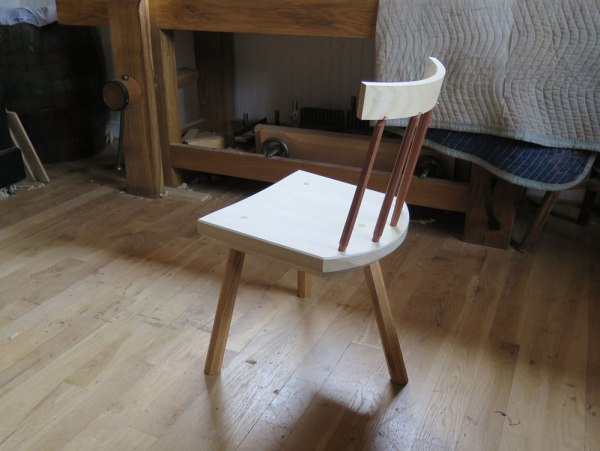
There are many reasons to use hide glue for furniture, and today I was reminded of one of them – hide glue sticks to itself.
This morning I assembled the uppercarriage of this wacky backstool and hit a serious snag. One of the spindles simply would not descend into its mortise enough. So I hit the assembly with a mallet. Then a heavier mallet. Then a hammer.
It would not budge. So I had to pull off the crest rail and remove the frozen spindle. It was locked in to the point that I had to saw it off and drill out the tenon. As always, I make extra spindles in case disaster strikes.
So while I prepped the new spindle, the hide glue on the other tenons and the mortises of the crest rail gelled and set up.
Had I used yellow glue, I would have been cornholed. I would have had to scrape the tenons clean and do something about the glue in the crest rail (I probably would have used a backup crest rail). Or switched to epoxy or any other number of more involved solutions.
But because it was hide glue, I relaxed as I did the repair.
Once the new spindle fit nicely, I reactivated the hide glue on the chair parts by painting on some slightly thinned hot hide glue. The spindle went in perfectly. The crest went on level. And then I finally exhaled.
Tomorrow I’m going to paint this backstool. It sits very nicely. Then I’m going to drink a bunch of beer and film me sitting in it to show you how stable it is.
The things I do for you readers.
— Christopher Schwarz
P.S. A couple weekends ago I did a two-day demonstration to the Alabama Woodworker’s Guild and, of course, I talked about hide glue. During a lull in my monologue I (jokingly) asked the club members if they wanted to hear my plan for dealing with ISIS.
Some wiseacre in the back piped up, “I’ll bet your plan involves hide glue.”